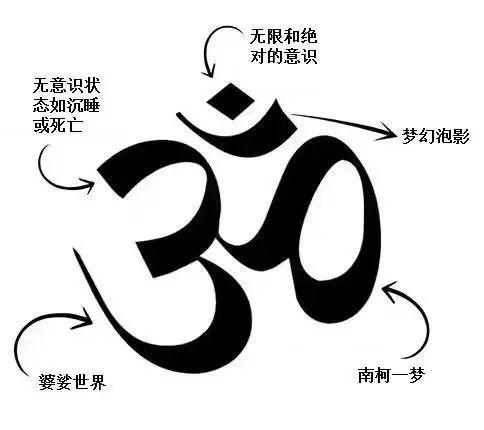
Understanding the Om Symbol Meaning in Hinduism
The Om symbol, often depicted as a three-part sound, is one of the most sacred symbols in Hinduism. It is not just a symbol but a representation of the universe and the divine. In this article, we delve into the various dimensions of the Om symbol in Hinduism, exploring its significance, history, and cultural implications.
Symbolic Significance
The Om symbol is considered to be the primordial sound from which the universe emerged. It is believed to be the sound of the universe, the sound of creation, and the sound of the divine. The symbol itself is made up of three parts: the top part, the middle part, and the bottom part.

The top part of the Om symbol is known as the “A” sound, which represents the beginning of the universe. The middle part, known as the “U” sound, represents the sustenance of the universe, while the bottom part, known as the “M” sound, represents the end of the universe. Together, these three sounds form the Om symbol, which is believed to encapsulate the entire cycle of creation, sustenance, and destruction.
Historical Context
The Om symbol has been used in Hinduism for thousands of years. It is mentioned in the Rigveda, one of the oldest sacred texts in Hinduism, which dates back to around 1500 BCE. The symbol is also found in other ancient texts, such as the Mahabharata and the Bhagavad Gita.
Historically, the Om symbol has been used in various forms, including as a mantra, a decorative element in temples, and as a symbol of spiritual power. It has been used in rituals, meditation, and other spiritual practices to invoke the divine and to achieve spiritual enlightenment.
Cultural Implications
The Om symbol has deep cultural implications in Hinduism. It is considered to be a sacred symbol that represents the unity of all beings and the interconnectedness of the universe. The symbol is often used in religious ceremonies, such as weddings and funerals, and is considered to be a symbol of purity and holiness.

In Hindu culture, the Om symbol is also used as a decorative element in homes, offices, and other places. It is often seen on jewelry, clothing, and other items. The symbol is believed to bring good luck, protection, and spiritual energy to those who wear or display it.
Om as a Mantra
The Om symbol is also used as a mantra, which is a sacred sound or word that is believed to have spiritual power. The Om mantra is often chanted during meditation, yoga, and other spiritual practices. It is believed to purify the mind, calm the body, and bring the practitioner closer to the divine.
When chanted, the Om mantra is typically pronounced as “Aum” or “Om.” The sound is believed to have a profound effect on the mind and body, helping to reduce stress, increase focus, and promote spiritual growth.
Om in Art and Architecture
The Om symbol is also a common element in Hindu art and architecture. It is often seen in the form of intricate carvings on temple walls, in the design of temple roofs, and in the layout of temple complexes. The symbol is believed to bring spiritual energy to the temple and to those who visit it.
In modern times, the Om symbol has also been adopted by other cultures and religions. It is often seen in yoga studios, meditation centers, and other places where spiritual practices are practiced. The symbol has become a global symbol of peace, unity, and spirituality.
Conclusion
The Om symbol is a multifaceted symbol in Hinduism, representing the universe, the divine, and the interconnectedness of all beings. Its significance extends beyond its symbolic representation, as it is deeply embedded in the cultural and spiritual fabric of Hinduism. Whether used as a mantra, a decorative element, or a symbol of spiritual power, the Om symbol continues to be a vital part of Hindu spiritual practice and cultural identity.





